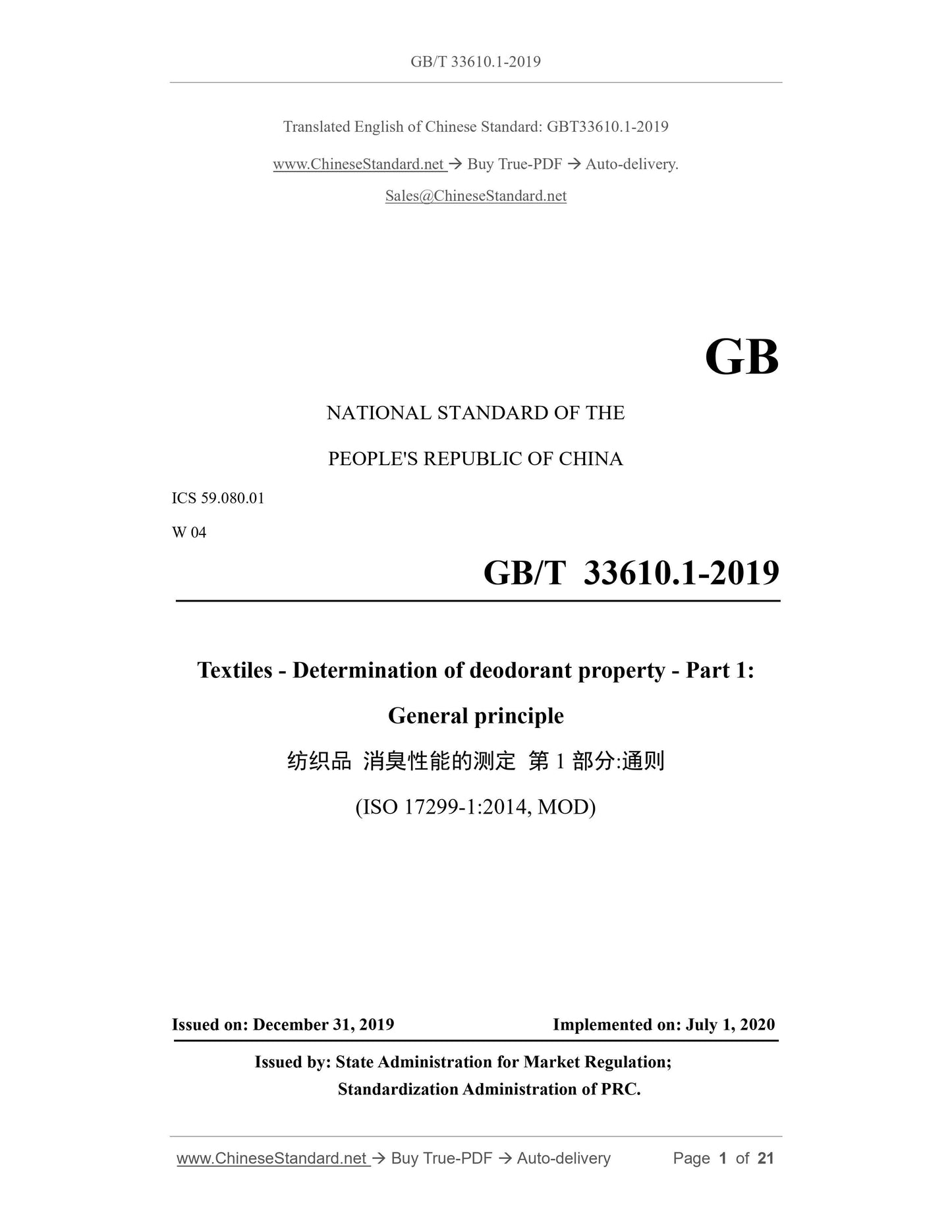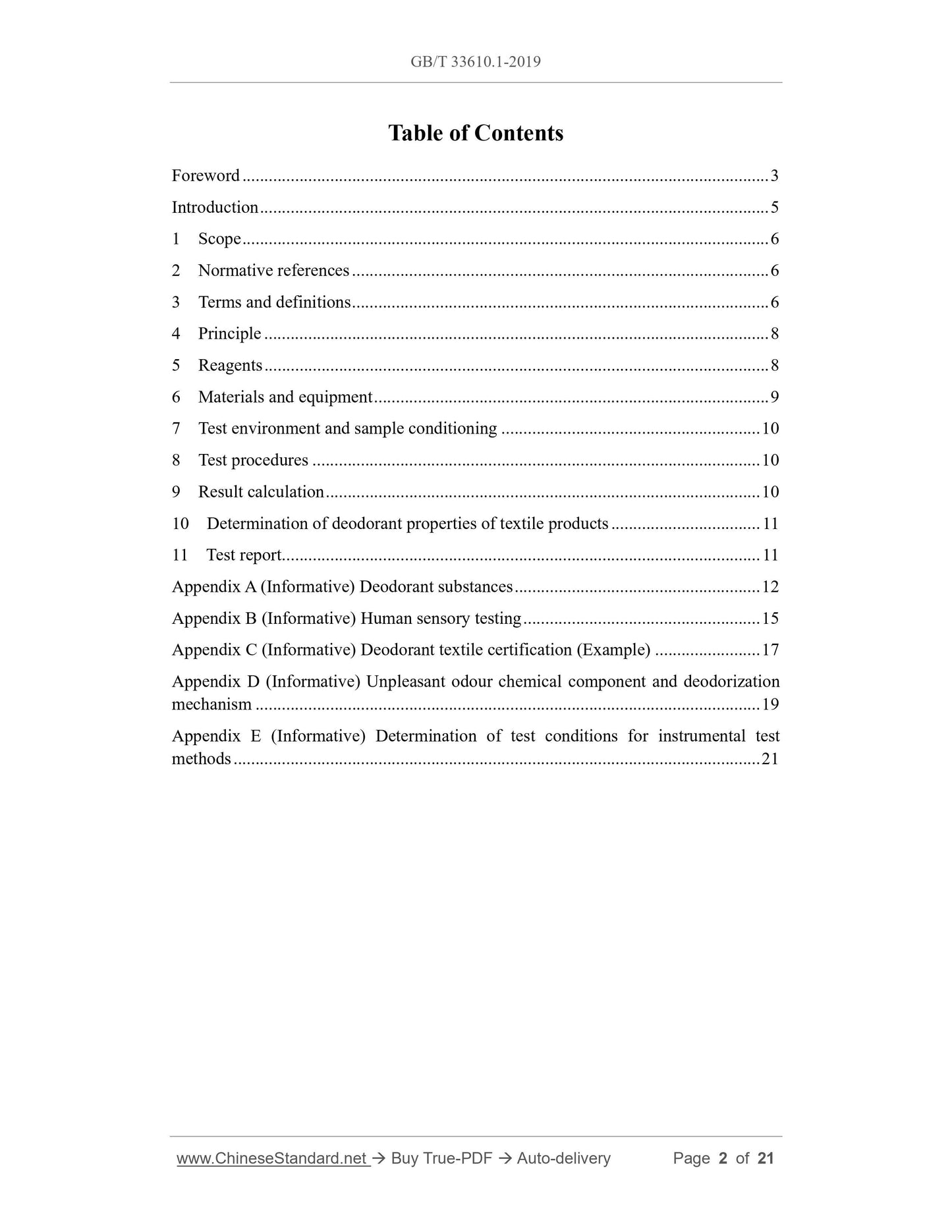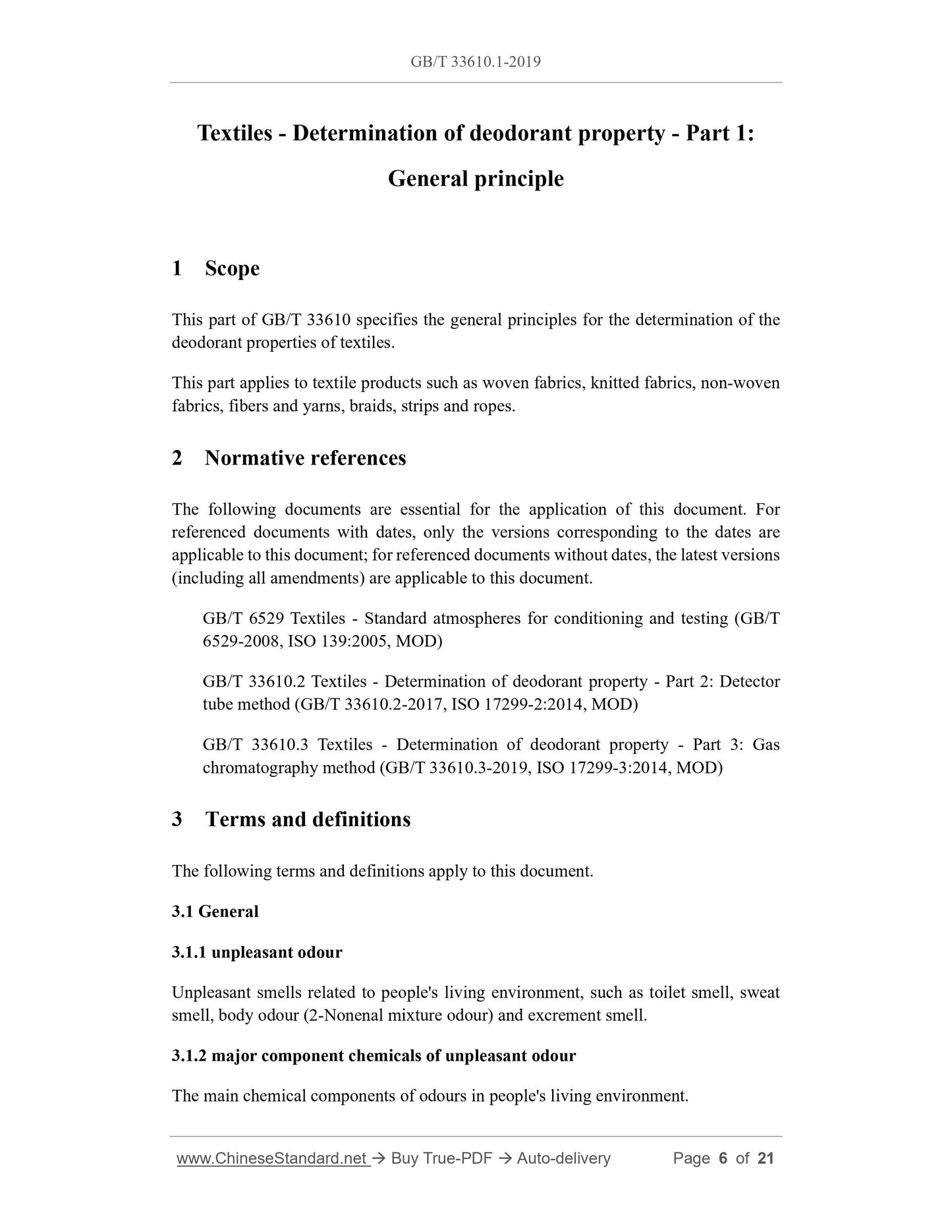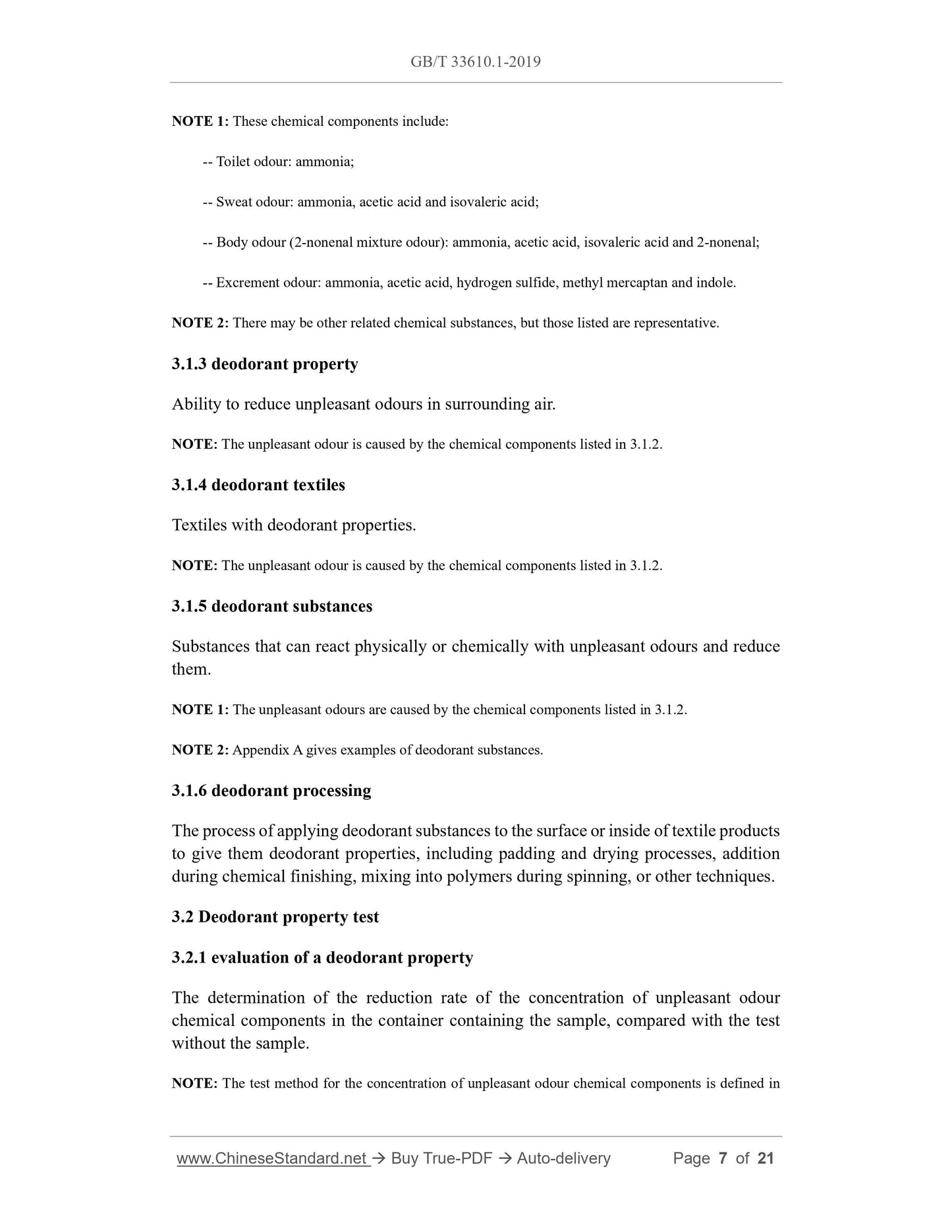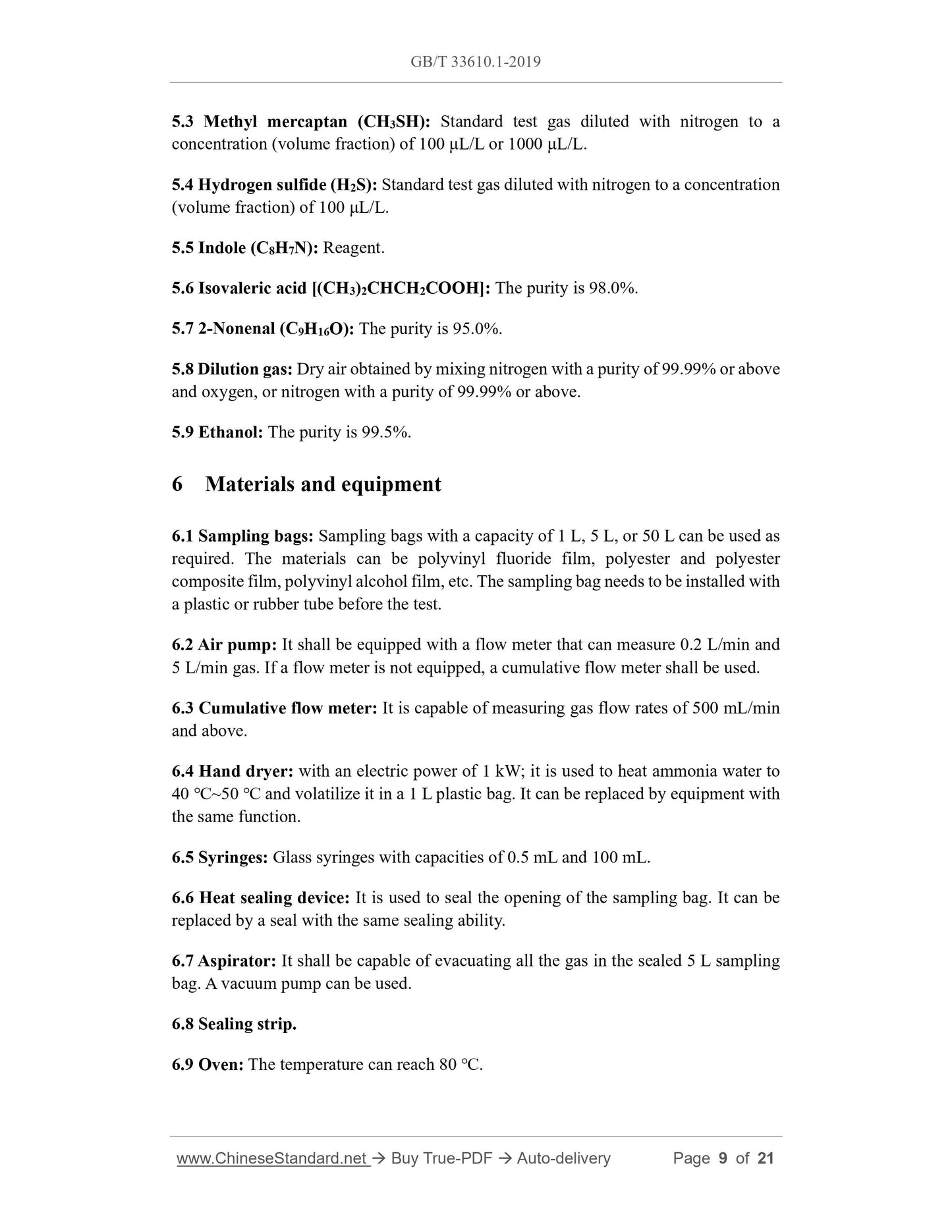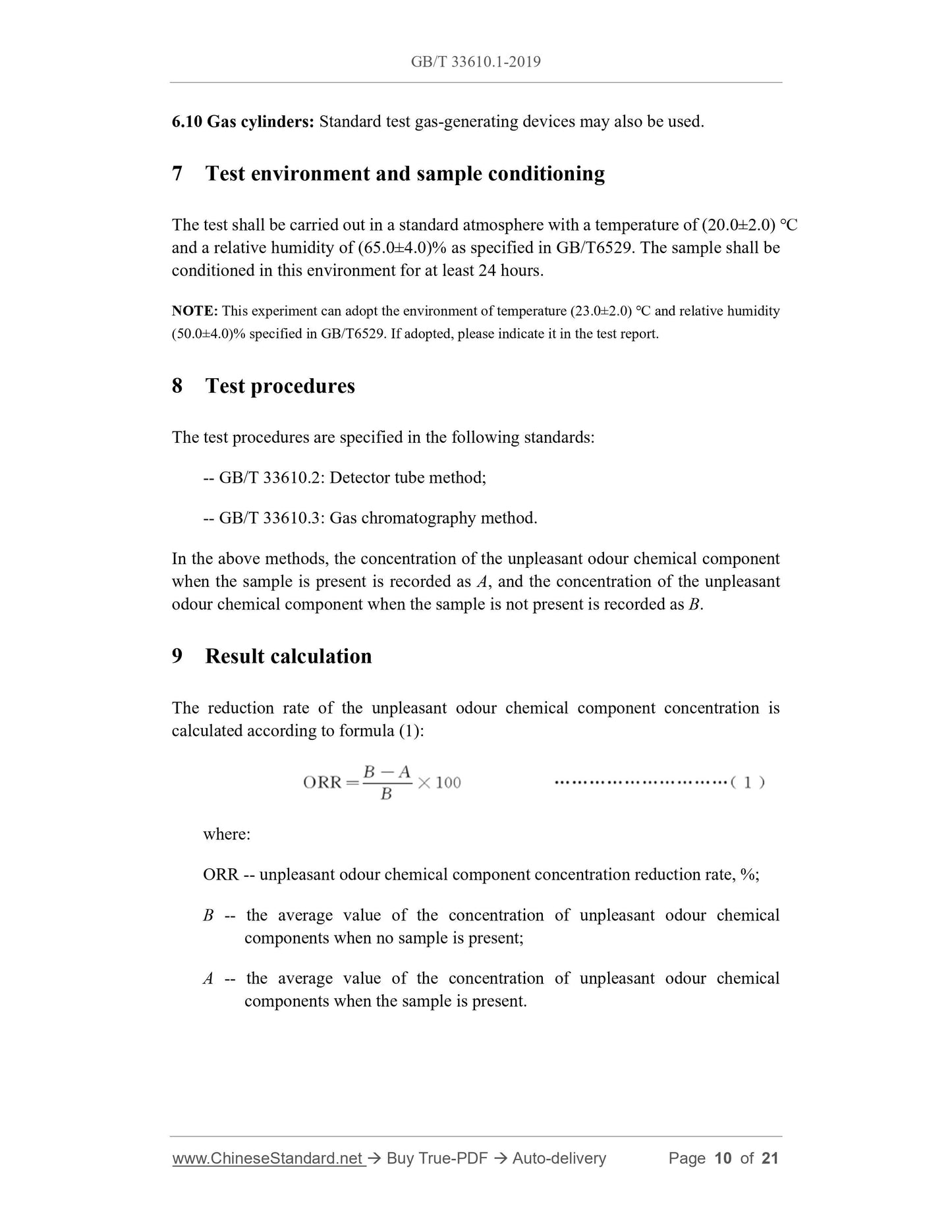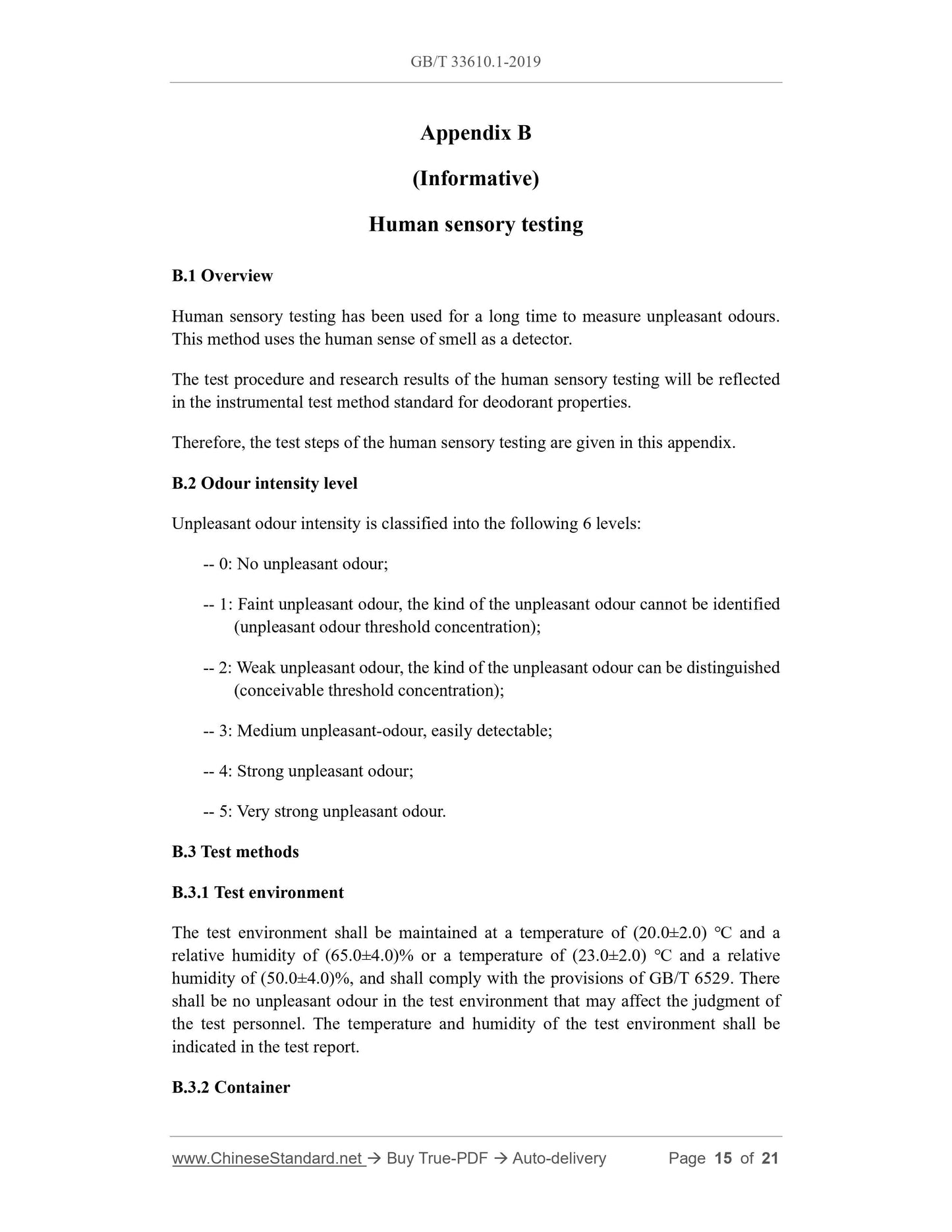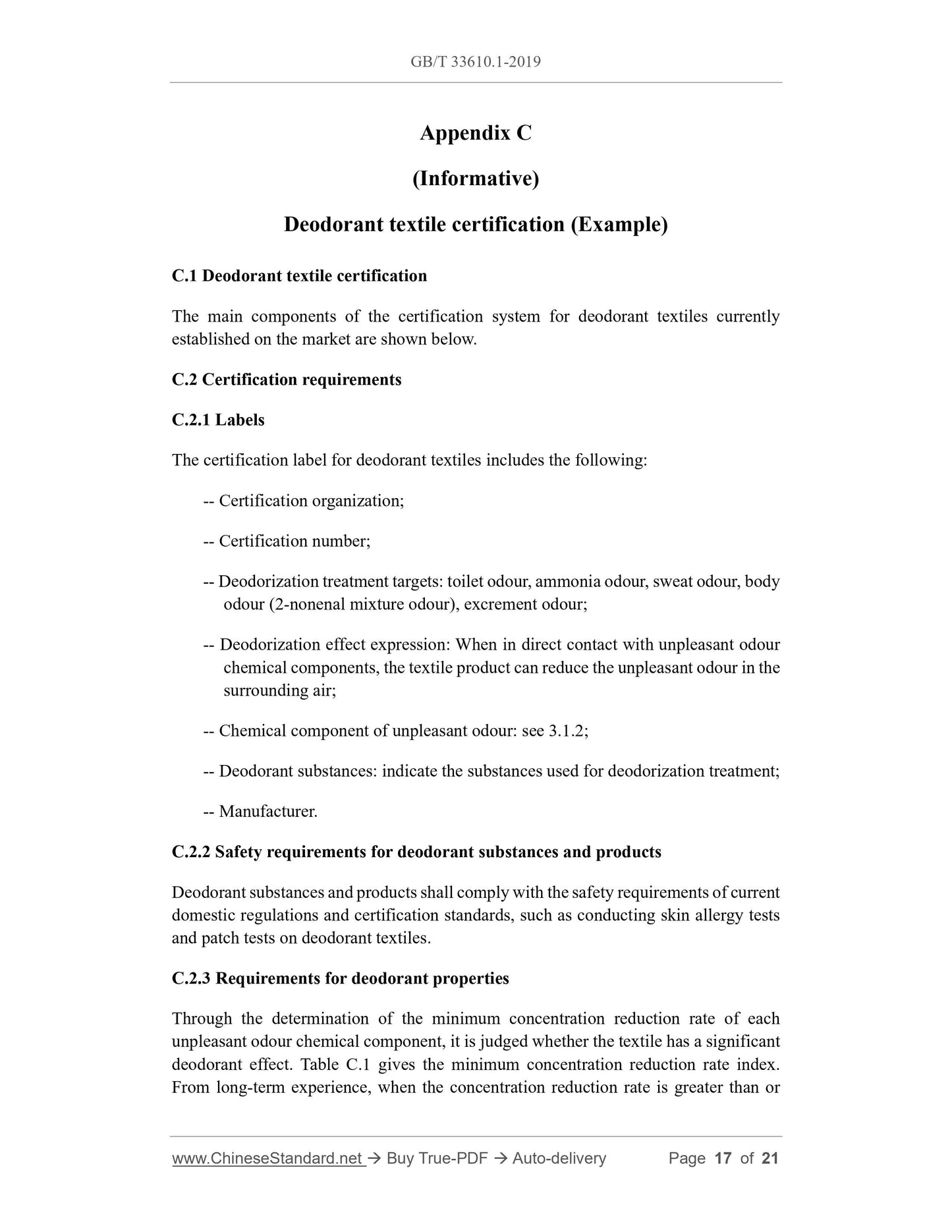1
/
of
8
www.ChineseStandard.us -- Field Test Asia Pte. Ltd.
GB/T 33610.1-2019 English PDF (GB/T33610.1-2019)
GB/T 33610.1-2019 English PDF (GB/T33610.1-2019)
Regular price
$255.00
Regular price
Sale price
$255.00
Unit price
/
per
Shipping calculated at checkout.
Couldn't load pickup availability
GB/T 33610.1-2019: Textiles -- Determination of deodorant property -- Part 1: General principle
Delivery: 9 seconds. Download (and Email) true-PDF + Invoice.Get Quotation: Click GB/T 33610.1-2019 (Self-service in 1-minute)
Newer / historical versions: GB/T 33610.1-2019
Preview True-PDF
Scope
This part of GB/T 33610 specifies the general principles for the determination of thedeodorant properties of textiles.
This part applies to textile products such as woven fabrics, knitted fabrics, non-woven
fabrics, fibers and yarns, braids, strips and ropes.
Basic Data
| Standard ID | GB/T 33610.1-2019 (GB/T33610.1-2019) |
| Description (Translated English) | Textiles -- Determination of deodorant property -- Part 1: General principle |
| Sector / Industry | National Standard (Recommended) |
| Classification of Chinese Standard | W04 |
| Classification of International Standard | 59.080.01 |
| Word Count Estimation | 18,114 |
| Date of Issue | 2019-12-31 |
| Date of Implementation | 2020-07-01 |
| Issuing agency(ies) | State Administration for Market Regulation, China National Standardization Administration |
Share
